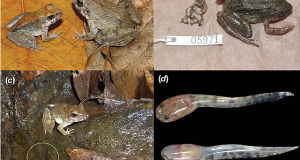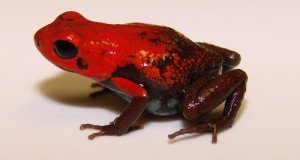An article published in the June 30, 2008 issue of The Proceedings of the National Academy of Sciences documents a heretofore unknown vertebrate life-history strategy…2/3 of the Labord’s chameleon’s life is spent within the egg.
Native to southwestern Madagascar, this tiny lizard lives for only 4-5 months, after an incubation period of 7-9 months. The entire life cycle is synchronized to an extraordinary degree, with nearly all members of the species hatching, breeding and dying in concert. Uniquely for a lizard, no adults survive until the next generation hatches…all individuals hatch in November, mate in January, and die shortly thereafter. The time period from conception to death – usually less than 1 year – is perhaps the shortest known for any vertebrate.
Researchers are trying to identify the genetic or hormonal process that regulates the lifespan. An understanding of this phenomenon may point to ways of controlling cell death in humans.
You can read about field research projects dealing with this and related chameleons at:
http://www.madagasikara-voakajy.org/en/reptiles_and_amphibians
 That Reptile Blog – Reptile, Amphibian and Exotic Pet Care and Information
That Reptile Blog – Reptile, Amphibian and Exotic Pet Care and Information



